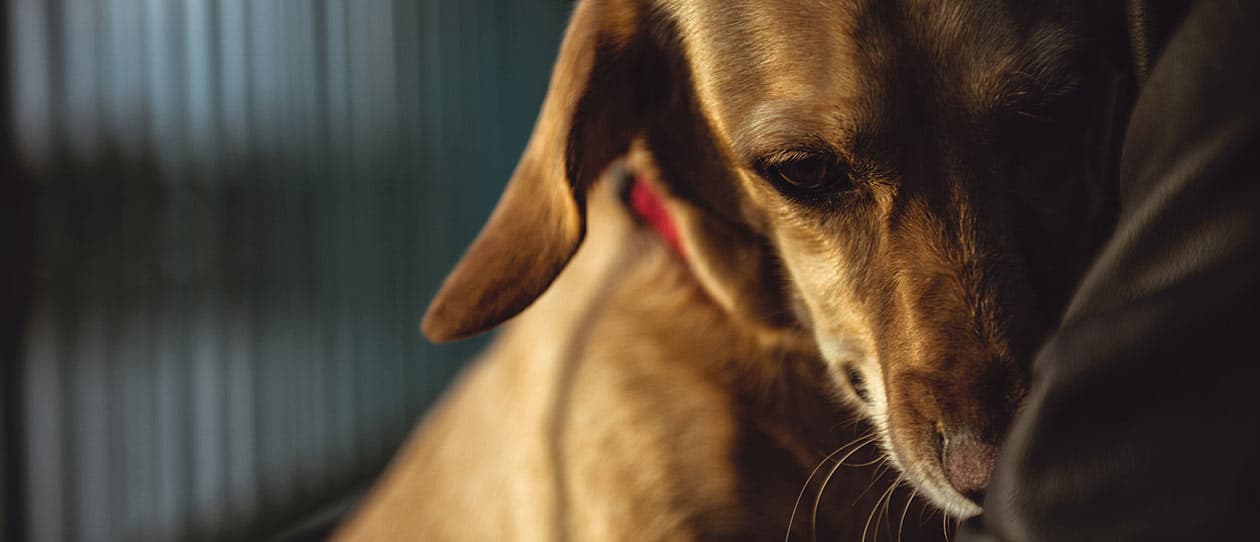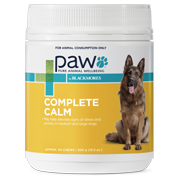
- A Guide To Perfect Your Pet's Health/
- Health and Vitality Products For Your Dog/
- Identify and Treat Anxiety Symptoms In Your Dog


Separation Anxiety
Separation Anxiety is estimated to affect 14% of all dogs. Precisely as it sounds, separation anxiety is caused by Fido being separated, or fearing separation, from their family members. It essentially means your dog is unable to become settled without a family member’s presence.
Separation anxiety may be caused by hyper or dysfunctional attachment, which is why many experts recommend puppies spend some time alone as they grow up. It may also develop it following changes in their daily routine or an event that caused them to become unsettled without you.
Fear-related anxiety
Fear related anxiety may be due to loud noises, strange people or animals, events – from vet visits to car rides. It can even something as arbitrary as an object or surface (grass, tiles or stone flooring, for example.) Fear can also develop following an unpleasant or scary experience or when they are forced into a situation where they were unable to escape or get away from. The stimulus causes the panic, such as being locked in crate.
Fearfulness, and as a result anxiety, can also develop in dogs that do not receive enough social or environmental stimulation before 14 weeks of age. At the other end of the spectrum, changes due to ageing may be at the root of the problem. Anxiety can develop as a result of cognitive dysfunction syndrome, where a decline in memory, learning, perception and awareness occurs; similar in nature to Alzheimer’s disease.
Illness related anxiety
Neither last nor least, illness or painful physical conditions can also create anxiety – from nervous system changes, infectious disease or from being exposed to toxins.Identifying signs and symptoms
As you can imagine, the signs and symptoms are often not hard to spot. They can range from:- destructive behaviour, particularly at exits or toward owner possessions in the case of separation anxiety
- distress vocalisation, such as barking and howling
- toileting indoors and even diarrhoea
- pacing or restlessness
- repetitive or compulsive behaviours, such as teeth grinding, tail chasing, scratching, licking or digging.
They may try to escape the area, and some dogs will react to anxiety with aggressive behaviour, which could make them a danger to themselves and others. Some of these signs and symptoms are the same for other conditions, so it is recommended to see your vet to rule out other possible causes.
Treatment
Depending on the severity and cause of your pooch’s anxiety, the best course of treatment will vary. The first step should be a visit to your vet. They will take a thorough history and may do a blood test to help rule out any physical causes of the anxiety, for example, brain or thyroid disease or exposure to toxins. If they diagnose anxiety, they should make specific recommendations based on your individual dog, and the trigger. This can include different types of behavioural techniques that can be used to alleviate your dog's fears and anxieties. In some cases, they may prescribe a medication or supplement in addition to behavioural therapy.
Your vet may also recommend seeking further assistance from a veterinary behaviourist or accredited dog trainer. Often several sessions are required and these professionals can help you understand the root cause of the behaviour and plan a therapeutic program you can implement at home. National Dog Trainers Federation (NDTF) is the National representative body in Australia for dog trainers, and they offer a searchable database online.
Behaviour modification
It is possible to encourage fearful behaviours if you DIY behaviour modification, so do take care and talk to your vet about suitable strategies for your specific situation. Behaviourists will generally recommend desensitisation and counter-conditioning if anxiety is treated early.Desensitisation
Desensitisation involves providing repeated, controlled exposure to the stimulus that usually causes a fearful or anxious response. This is usually done in such a short burst of time that they do not respond with the undesirable response - fear. The goal is to decrease the fear response over time.Counter-conditioning
Counter-conditioning involves asking your dog to perform a positive behaviour in place of the negative behaviour. For example, this could be asking them to sit and stay when they encounter the stimulus that creates anxiety and praise them for doing so, creating a desirable response to the stimulus.Supplements to assist
Your vet may also recommend trying a supplement designed to help calm anxiety. Look for a product containing tryptophan as it is vital precursor for the synthesis of a number compounds involved in helping to reduce anxiety, including:- Serotonin– involved in the regulation of mood, sleep and appetite. Elevated serotonin levels have been shown to reduce the incidence of other behaviour disorders such as separation and travel anxiety.
- Melatonin– responsible for the regulation of physiological functions related to regulating sleep

Related product:
PAW Complete Calm ChewsTasty kangaroo based chews that contain key ingredients such as Tryptophan, B group vitamins and a blend of multivitamins and nutrients to support the general health and nervous function in dogs.




